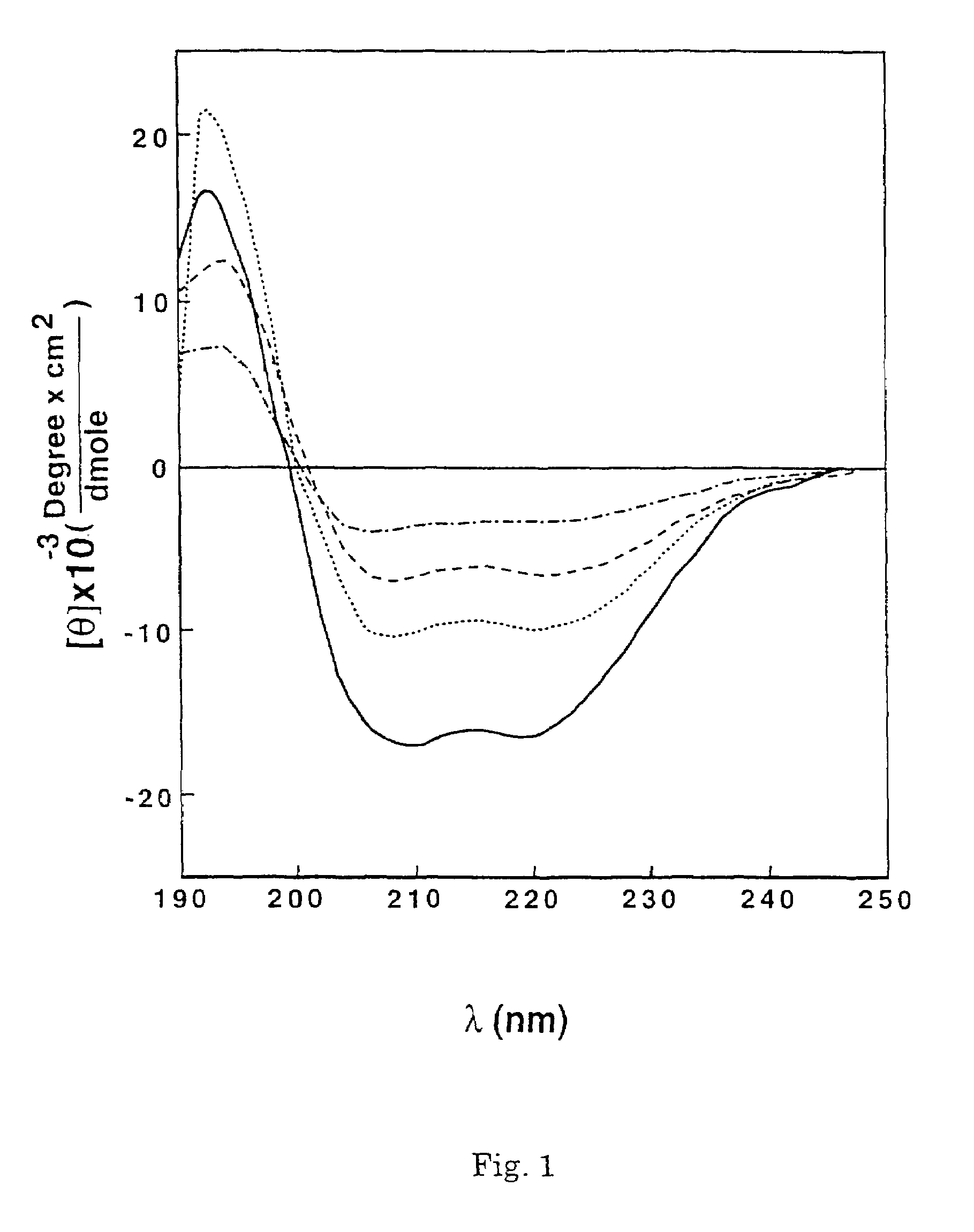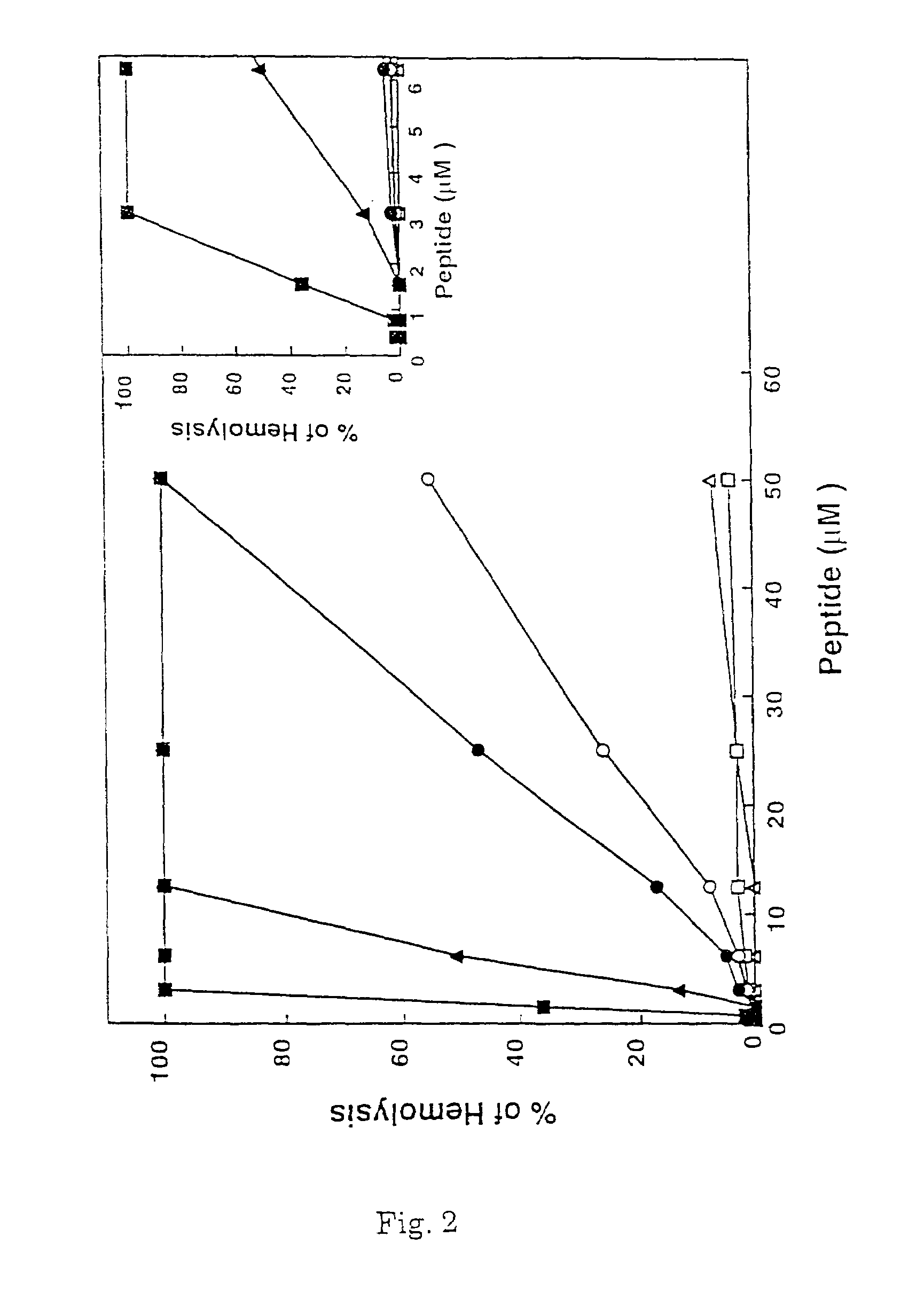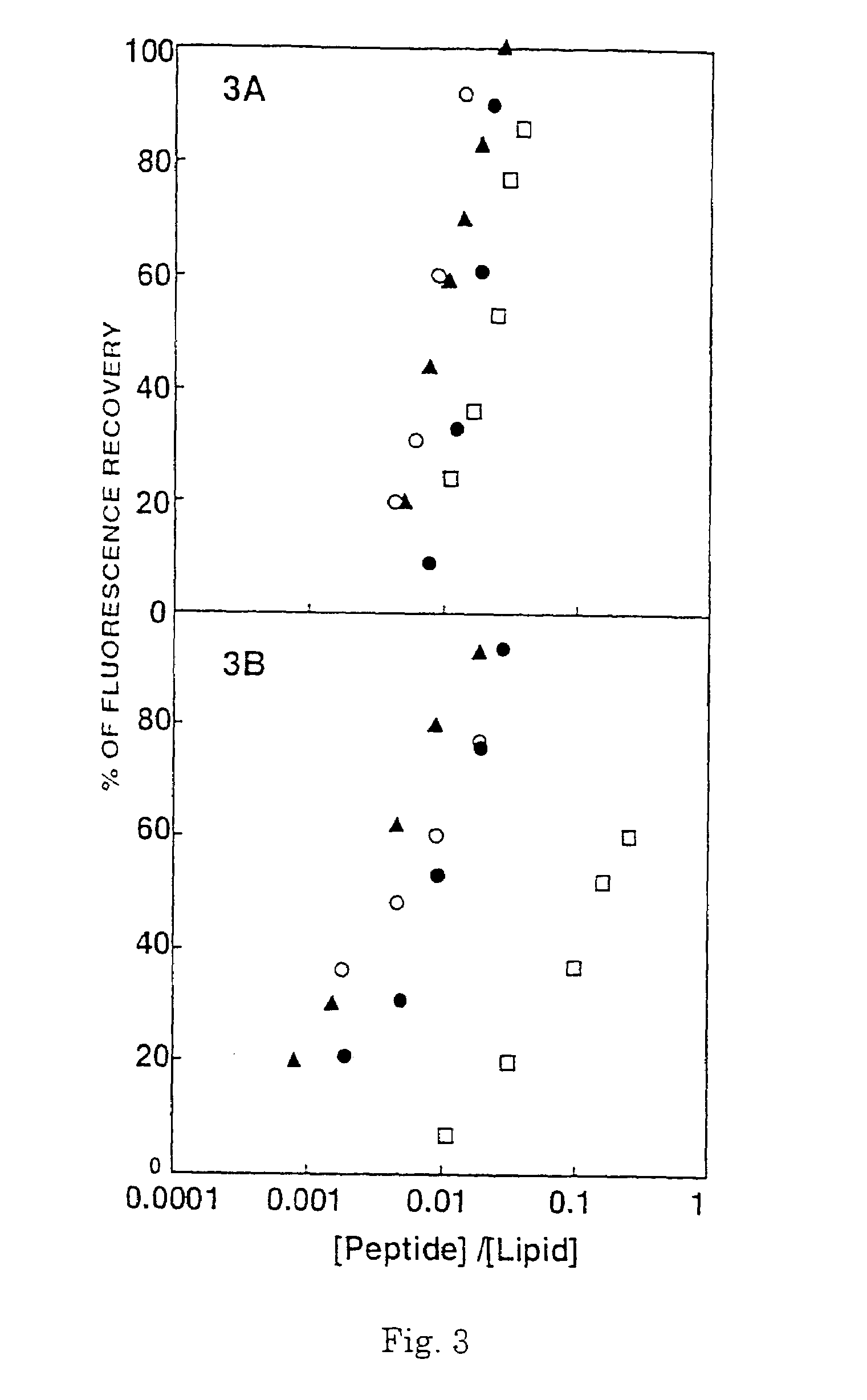Antipathogenic synthetic peptides and compositions comprising them
a synthetic peptide, antipathogenic technology, applied in the direction of antibacterial agents, peptide/protein ingredients, peptide sources, etc., to achieve the effect of easy screening
- Summary
- Abstract
- Description
- Claims
- Application Information
AI Technical Summary
Benefits of technology
Problems solved by technology
Method used
Image
Examples
example 1
Synthesis and Biological Activity of Pardaxin-Derived Diastereomers
[0099]1.1 Synthesis. To examine the role of the α-helical structure of a polycationic cytolysin in its cytotoxicity towards mammalian cells and bacteria, a series of pardaxin-derived peptides were synthesized as described in sections (ii) and (iii) of the Experimental Procedures, and characterized for their structure, hemolytic activity on hRBCs, antibacterial activity and effect on the morphology of bacteria.
[0100]Pardaxin (par) is a 33-mer peptide of the following sequence:[0101]Gly-Phe-Phe-Ala-Leu-Ile-Pro-Lys-Ile-Ile-Ser-Ser-Pro-Leu-Phe-Lys-Thr-Leu-Leu-Ser-Ala-Val-Gly-Ser-Ala-Leu-Ser-Ser-Ser-Gly-Gly-Gln-Glu (SEQ ID NO:98)
[0102]Modification of the pardaxin molecule in order to introduce a positive charge was made by either deleting the acidic C-terminus of pardaxin or converting the acidic C-terminus of pardaxin or of a fragment thereof to a positive one by reaction of both carboxyl groups of the Glu residue at the...
example 2
Synthesis and Biological Activity of Melittin-Derived Diastereomers
[0127]2.1 Synthesis. In order to further examine the role of the α-helical structure of cytolysins in their cytotoxicity against mammalian cells and bacteria and to gain insight into the mechanism underlying this effect, four diastereomers of melittin (mel) were synthesized.
[0128]Melittin is a 26-mer peptide of the sequence: Gly-Ile-Gly-Ala-Val-Leu-Lys-Val-Leu-Thr-Thr-Gly-Leu-Pro-Ala-Leu-Ile-Ser-Trp-Ile-Lys-Arg-Lys-Arg-Gln-Gln-NH2 (SEQ ID NO:99)
[0129]Modification of the melittin molecule in order to introduce a positive charge was made by converting the acidic C-terminus of melittin or of a fragment thereof to a positive one by reaction of the carboxyl group at the C-terminus with ethylene diamine, in melittin diastereomers in which the N-helix and the C-helix were altered by replacing the two Val residues at positions 5 and 8 of melittin, the Ile residue at position 17 and the Lys residue at position 21 by D-Val, D-...
example 3
Synthesis and Biological Activity of Model Lys / Leu Diastereomers
[0145]3.1 Lys / Leu diastereomers design. Six diastereomers of short linear model 12-mer peptides composed of varying ratios of lysine and leucine were synthesized in order (1) to examine whether a balance between hydrophobicity and a net positive charge may be a sufficient criteria necessary for selective bacterial lysis, and (2) to gain insight into the mechanism underlying this effect.
[0146]In the first series of model Lys / Leu 12-mer peptides 22–25, one third of their sequence was composed of D-amino acid residues. The location of the D-amino acids remained constant in all peptides which was constructed for maximum disruption of α-helical structure. D-amino acids were distributed along the peptide, leaving only very short stretches of 1–3 consecutive L-amino acids. The following peptides were synthesized:[0147]22. [D]-L3,4,8,10-K3L9 of the sequence: Lys-Leu-Leu-Leu-Leu-Leu-Lys-Leu-Leu-Leu-Leu-Lys-NH2 (SEQ ID NO:22)[014...
PUM
| Property | Measurement | Unit |
|---|---|---|
| Fraction | aaaaa | aaaaa |
| Fraction | aaaaa | aaaaa |
| Fraction | aaaaa | aaaaa |
Abstract
Description
Claims
Application Information
 Login to View More
Login to View More - R&D
- Intellectual Property
- Life Sciences
- Materials
- Tech Scout
- Unparalleled Data Quality
- Higher Quality Content
- 60% Fewer Hallucinations
Browse by: Latest US Patents, China's latest patents, Technical Efficacy Thesaurus, Application Domain, Technology Topic, Popular Technical Reports.
© 2025 PatSnap. All rights reserved.Legal|Privacy policy|Modern Slavery Act Transparency Statement|Sitemap|About US| Contact US: help@patsnap.com



